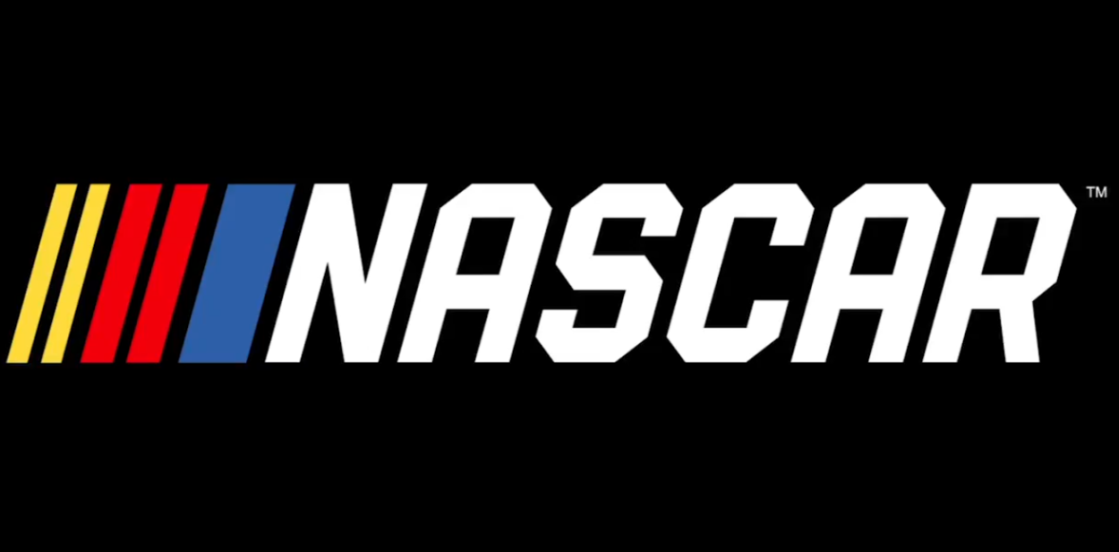
When NASCAR introduced the Next-Gen Car in 2022, there was much optimism that it would help improve the quality of racing. Since the Gen-6 Car debuted in 2013, dirty air had become much more prevalent than ever before. This hampered the racing.when trailing cars could not get close to their competitors without losing the handling.
NASCAR played around with a handful of packages in the Gen-6 Car’s final few years to bridge the gap to the Next-Gen Car. None of them worked that well.
Despite the Gen-6 Car’s troubles, there was one thing it did quite well at: short track racing.
It was not necessarily because of anything the car did well. Short track racing’s lack of dependence on aerodynamics makes it a very compatible style. The Gen-6 Car did not do anything in particular to hamper the short track racing product.
That is where the Next-Gen Car went wrong.
Mistakes Were Made
There are countless changes that were made for the car, many of which have been detrimental to the racing product. These changes were made in hopes of improving the racing at intermediate tracks.
The effect of these changes on intermediate racing is debatable. Some view the product as improved, others do not. One thing that has not been debatable is the short track product. It has been hampered to near unrecognizable levels.
So why is that?
For starters, tires are now wider than before. More tire on track means more grip. The cars also now use a five-speed transmission, up from their typical four-speed. This has caused shifting to be a normality at almost every short track race. Shifting gives drivers a bit more control than before, and could help negate the impact of their mistakes. The introduction of a rear diffuser has also given the cars more downforce underneath the car.
There are many other changes that have had an impact, but those three are the most glaring. The overall increase in grip around short tracks has made cornering speeds much higher than before. This has made passing more difficult than it has ever been on short tracks.
Trying to Find a Solution
NASCAR has dabbled in changes to the short track package, primarily on the aerodynamic side. The latest of these packages was used this past weekend in Phoenix. The rear diffuser dropped to having only two vertical fencing. Meanwhile, the rear spoiler was made slightly wider and taller.
These changes did not change much in terms of total downforce. Rather, it traded off downforce at the rear diffuser for more on the rear spoiler.
It serves as yet another change to the Next-Gen Car focused on aerodynamics rather than mechanical grip. These changes have failed in past attempts, and if the latest race at Phoenix was any indication, this new attempt failed as well.
Diminishing Returns
Multiple drivers felt the new package made little difference. Daniel Suarez and Tyler Reddick even went as far to say the car was worse in traffic than before.
That’s not to say it was all bad. There were 2,813 green flag passes during the race. While this data is inflated by various factors, that number is still the highest of the five Phoenix races with the Next-Gen Car.
Regardless, the problems could be seen just by watching the race. Cars would slide up the track the moment they got within a few tenths of the car ahead. Cars that had been front runners all day got stuck behind those on older tires who stayed out under caution. These are all too familiar traits we have seen with prior packages.
At this point, the question has to be asked what else NASCAR can do.
Are There Any Solutions?
One of the more obvious changes NASCAR could attempt would be decreasing the tire width. The problem is that the Next-Gen Car was designed to have wider tires. Taking away width would require a much more in-depth and expensive change. Rather than going through with that, different compounds have been experimented with. Goodyear tried making the right side tires softer for the race at Phoenix, but clearly it had little impact.
Chase Elliott expressed skepticism in the changes that have been made.
“Man, I’ll shoot you super straight,” Elliott said. “They change the tire all the time. Not only does it not make the racing look any different, but it’s really hard to tell from inside the car… the cars are what they are.”
The Next-Gen Car Needs Revisions
Elliott’s comments sum up the situation that is becoming increasingly dire for NASCAR. Short track racing is at the core of the sport, and it’s consistently providing some of the worst races on schedule since the Next-Gen Car’s introduction. The same problems at short tracks also persist at intermediate tracks and road courses. However, the short track issues gain attention due to those races being phenomenal in years past.
Slight aerodynamic changes will not change anything. Different tire compounds will not change anything. Even taking the tapered spacer off the engine to gain a bit more horsepower likely will not change anything.
The Next-Gen Car has fundamental problems in its design. The tire width. The transmission. The aerodynamics. NASCAR tried fixing the problems of the Gen-6 Car, and instead made it worse in nearly every conceivable way.
These problems cannot be solved with a quick fix like NASCAR has tried for three years now. It will take a lot of time and money to make the proper changes.
Time will tell whether NASCAR is willing to do what needs to be done, or continue to let the on-track product suffer.
Image courtesy of NASCAR.com
Stay tuned each week for more news and analysis from the world of motorsport
“Follow” the The Game Haus and Wenger on X for more motorsport coverage, as well as other sports and esports.
“From Our Haus to Yours!”
- SEO Powered Content & PR Distribution. Get Amplified Today.
- PlatoData.Network Vertical Generative Ai. Empower Yourself. Access Here.
- PlatoAiStream. Web3 Intelligence. Knowledge Amplified. Access Here.
- PlatoESG. Carbon, CleanTech, Energy, Environment, Solar, Waste Management. Access Here.
- PlatoHealth. Biotech and Clinical Trials Intelligence. Access Here.
- Source: https://thegamehaus.com/sports/nascars-next-gen-car-is-in-dire-need-of-revision/2024/03/13/
- :has
- :is
- :not
- :where
- $UP
- 2%
- 2013
- 2022
- a
- ahead
- AIR
- All
- almost
- also
- an
- analysis
- and
- Another
- any
- anything
- ARE
- around
- AS
- asked
- At
- attempt
- Attempts
- attention
- away
- Bad
- BE
- because
- become
- becoming
- been
- before
- behind
- being
- Bit
- BRIDGE
- but
- by
- CAN
- cannot
- car
- cars
- caused
- caution
- change
- Changes
- clearly
- Close
- comments
- compatible
- competitors
- consistently
- continue
- control
- Core
- could
- countless
- courses
- courtesy
- coverage
- Daniel
- data
- day
- debuted
- decreasing
- dependence
- Design
- designed
- detrimental
- DID
- difference
- different
- difficult
- dire
- do
- does
- done
- drivers
- dropped
- due
- during
- each
- effect
- Elliott
- else
- Engine
- esports
- Even
- EVER
- Every
- expensive
- expressed
- factors
- Failed
- familiar
- far
- felt
- fencing
- few
- final
- Find
- five
- Fix
- focused
- For
- from
- front
- fundamental
- Gain
- game
- gap
- get
- given
- gives
- going
- got
- Green
- had
- handful
- Handling
- Hard
- Have
- having
- help
- higher
- highest
- hopes
- However
- HTTPS
- I’LL
- if
- Impact
- improve
- improved
- improving
- in
- in-depth
- Increase
- increasingly
- indication
- inside
- instead
- Intermediate
- introduced
- Introduction
- issues
- IT
- ITS
- just
- Lack
- latest
- let
- levels
- like
- likely
- little
- Look
- losing
- Lot
- made
- make
- MAKES
- Making
- many
- means
- Meanwhile
- mechanical
- mistakes
- moment
- money
- more
- most
- motorsport
- much
- Near
- nearly
- necessarily
- Need
- needs
- New
- news
- None
- now
- number
- obvious
- of
- off
- older
- on
- ONE
- only
- Optimism
- or
- Other
- Others
- our
- out
- overall
- package
- packages
- particular
- passes
- Passing
- past
- phenomenal
- phoenix
- plato
- Plato Data Intelligence
- PlatoData
- played
- Point
- prevalent
- primarily
- Prior
- Problem
- problems
- Product
- proper
- providing
- quality
- question
- Quick
- quite
- Race
- races
- racing
- rather
- really
- require
- right
- road
- s
- Said
- same
- say
- schedule
- seen
- serves
- SHIFTING
- Shoot
- Short
- side
- since
- situation
- Skepticism
- Slide
- slightly
- Solutions
- some
- speeds
- Sport
- Sports
- starters
- stayed
- Still
- straight
- stuck
- style
- suffer
- sum
- Super
- Take
- taking
- tell
- terms
- than
- that
- The
- the world
- their
- Them
- There.
- These
- they
- thing
- this
- those
- three
- Through
- time
- tire
- tires
- to
- too
- Total
- track
- tracks
- traded
- traffic
- transmission
- tried
- tuned
- two
- tyler
- typical
- under
- underneath
- use
- used
- various
- vertical
- very
- View
- was
- watching
- Way..
- we
- week
- weekend
- WELL
- went
- were
- What
- when
- whether
- which
- while
- WHO
- why
- wider
- will
- willing
- with
- within
- without
- worked
- world
- worse
- Worst
- would
- Wrong
- X
- years
- yet
- you
- zephyrnet










